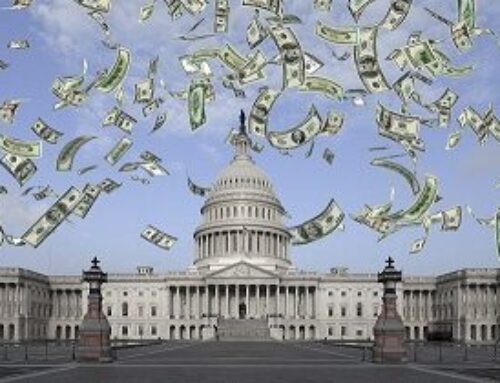The Tax Cuts and Jobs Act (TCJA), enacted in 2017, introduced a range of temporary and permanent changes to the federal tax system. A recent report by the Congressional Budget Office (CBO) has revealed that extending the provisions of the TCJA that are set to expire at the end of next year would cost $3.973 trillion over 10 years (without interest – with interest $4.6 trillion). To put this into perspective, the CBO projected that absent extension, the primary deficit over that decade would be $7.405 trillion. Adding the TCJA extension costs on top increases that by 50 percent. If you just look at 2027 (when the extension would be fully in force) the TCJA provisions add $460 billion to the baseline deficit, which is a staggering increase from $591 billion.
The TCJA’s modifications for individuals, such as the elimination of personal exemptions and increases in the standard deduction and child tax credit, are among the provisions scheduled to lapse. Changes to various itemized deductions and the alternative minimum tax will also expire. Several TCJA provisions affecting businesses are also due to expire or be modified, including the expensing of business investment, the 20% deduction for certain business income, and the deductibility of employer-provided meals. The TCJA also included several other provisions that are set to expire, such as the employer credit for paid family and medical leave and modifications to the estate tax deduction.
The Tax Relief for American Families and Workers Act of 2024 (H.R. 7024), which was passed by the House in late January and is currently awaiting a Senate vote, is one of the first attempts to extend select provisions from the TCJA. It includes an increase in the refundable portion of the Child Tax Credit for 2023-2025, the extension of 100 percent bonus depreciation, the repeal of the requirement to amortize R&D expenses, and changes to the business interest expense limitation. The CBO estimates the bill would result in a net increase of the federal deficit of only $0.4 billion over 2024-2033.
President Biden stirred controversy with a post on “X” (formerly Twitter) claiming he would allow the TCJA to expire if reelected. In her remarks last month, National Economic Advisor Lael Brainard said the administration’s plan is to maintain tax cuts for middle-class families while allowing the TCJA provisions for high-income earners to expire. This underscores that plans aren’t as simple as letting the whole package expire. TCJA reduced tax rates and dramatically increased the standard deduction simplifying taxes for many Americans. It also reduced the home mortgage interest deduction and capped deductions for State and Local Taxes (SALT) without indexing the cap for inflation, something that will begin to bite more taxpayers in the future.
Former President Donald Trump has expressed strong support for making the TCJA provisions permanent. He has consistently highlighted the economic benefits of the TCJA, arguing that the tax cuts have spurred economic growth, increased wages, and reduced unemployment.
Besides these expiring TCJA provisions, Congress may tackle several other TCJA-related issues in 2024 and 2025. Despite the TCJA’s permanent reduction of the corporate tax rate to 21%, growing deficit concerns and shifting political dynamics could prompt Congress to consider increasing the corporate tax rate or modifying other business tax provisions to boost revenue.
The TCJA also changed the rules for how businesses can use their losses to reduce their taxes. It limited the deduction for Net Operating Losses (NOL) to 80% of taxable income and stopped businesses from applying these losses to past years’ taxes. However, it allowed businesses to carry these losses forward indefinitely to offset future taxable income. These provisions are set to expire at the end of 2028, potentially reverting to pre-TCJA rules that allowed full deductibility of NOLs, a two-year carryback, and a 20-year carryforward.
At the same time, Congress will also need to look at changes to the Alternative Minimum Tax (AMT). The AMT is a separate tax system designed to ensure that high-income individuals and corporations pay at least a minimum amount of tax. The TCJA increased the AMT exemption amounts, but those changes will also expire soon. Congress will need to decide whether to extend these changes or adjust them further to ensure a fair tax burden.
Another issue we have discussed is the revision of international tax provisions. Anticipated changes to the Global Intangible Low-Taxed Income (GILTI), Base Erosion and Anti-Abuse Tax (BEAT), and Foreign-Derived Intangible Income (FDII) could lead to higher tax rates for multinational corporations and bring U.S. tax policies more in line with global minimum tax regimes.
As the debate over the future of the TCJA unfolds, policymakers are faced with a complex balancing act. Extending the TCJA provisions would undoubtedly have significant fiscal implications, adding to the already substantial federal deficit. Yet, allowing them to expire could result in higher taxes for individuals and businesses, potentially stifling economic growth. Congress should heed of the immortal words of Yogi Berra, “When you come to a fork in the road, take it.”











Get Social